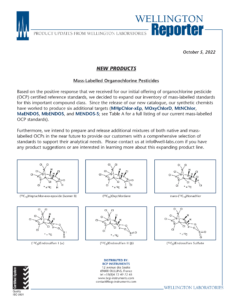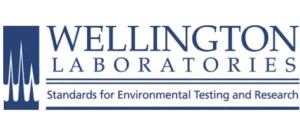Organochlorine pesticides: highly persistent compounds in the environment
Organochlorine pesticides (OCPs) are synthetic compounds that have long been used to protect crops. They include DDT, lindane, aldrin, chlordane and endosulfan. Thanks to their formidable effectiveness against numerous insect pests, these substances have been used on a massive scale. However, their remarkable chemical stability and their ability to accumulate in living organisms now pose serious health and environmental problems.
Contaminants under global surveillance
Over time, international authorities have recognised the dangers posed by OCPs. So they classified them as persistent organic pollutants (POPs) under the Stockholm Convention. This international treaty provides a strict framework for their use and production, imposing bans and requiring rigorous monitoring campaigns by signatory countries.
Despite these measures, OCPs remain omnipresent in the environment. Residues are still found in agricultural soils, sediments, certain foodstuffs and in human and animal biological tissues. Their persistence, sometimes over several decades, illustrates the extent of their dispersion, even in regions such as France.
Rigorous analytical requirements
Faced with this situation, laboratories need to use analysis methods that are both sensitive and selective in order to identify and quantify these contaminants in complex matrices. To guarantee reliable results, it is essential to use certified analytical standards during the calibration, method validation and quality control stages.
The Wellington response: high-performance reference standards
Wellington Laboratories offers analysts a wide range of reference materials specifically formulated for OCP analysis. Thanks to their high purity and rigorous traceability, these standards meet the requirements of the main international standards (EPA, ISO, JIS, etc.).
More specifically, the range includes:
- Individual solutions of native or ¹³C-labelled compounds, including several new products introduced since the last 2021-2023 catalogue:
- MHpChlor-xEp: (¹³C₁₀)Heptachlor-exo-epoxide (B isomer)
- MOxyChlorD: (¹³C₁₀)Oxychlordane
- MtNChlor: trans-(¹³C₁₀)Nonachlor
- MaENDOS: (¹³C₉)Endosulfan I (α)
- MbENDOS: (¹³C₉)Endosulfan II (β)
- MENDOS-S: (¹³C₉)Endosulfan Sulfate
- Native mixtures of the most frequently monitored OCPs, such as DDX, HCH, cyclodienes and hexachlorobenzene (HCB).
- Isotopically-labelled mixtures, optimised for isotope calibration (Isotope Dilution Mass Spectrometry – IDMS), enabling matrix effects to be corrected effectively.
These CRMs are ISO 9001, ISO/IEC 17025 and ISO 17034 certified. Each batch is supplied with a full technical data sheet, including certified concentration, purity, stability and associated uncertainties.

Find out more:

- Organochlorine pesticides (OCP)
- Wellington Laboratories
We can help you:
BCP Instruments puts its expertise at the service of French and Belgian laboratories to help you with your environmental analyses. Contact us today to find out how our solutions can meet your specific needs.
